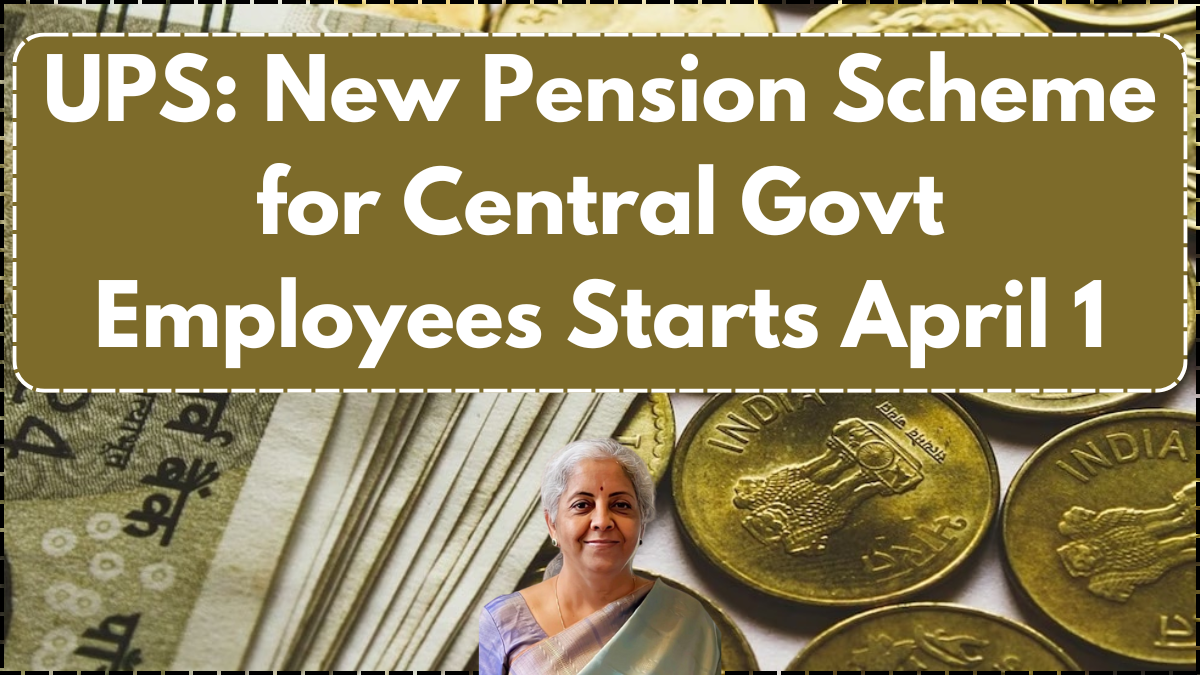The government has officially announced the implementation of the Unified Pension Scheme (UPS) for central government employees, effective April 1. This initiative introduces a structured retirement plan that ensures financial stability for employees post-retirement. Under this scheme, retired personnel will receive 50% of their last-drawn salary as a guaranteed pension. Unlike previous pension frameworks, UPS aims to combine the best aspects of both the National Pension System (NPS) and the Old Pension Scheme (OPS), creating a more secure and sustainable model.

Integration of UPS with the National Pension System (NPS)
The UPS will be integrated with the National Pension System (NPS), which has been the primary retirement savings plan for government employees. Initially, UPS will apply only to central government employees, but over time, it is expected to extend to state government employees, broadening its benefits.
Understanding the National Pension System (NPS)
What is the National Pension System (NPS)?
The National Pension System (NPS) was introduced on January 1, 2004, replacing the Old Pension Scheme (OPS). Initially, NPS was only applicable to government employees, but in 2009, it was expanded to include all Indian citizens, NRIs, self-employed individuals, and workers in the unorganized sector. It was designed as a market-linked pension scheme, making it a high-risk, high-return option.
How Does NPS Work?
NPS operates on a contributory model, where both the employee and employer contribute a portion of the salary toward retirement savings. These funds are then invested in market-linked instruments. Upon retirement:
- Employees can withdraw up to 60% of the accumulated corpus as a lump sum.
- The remaining 40% must be invested in annuities, ensuring a monthly pension post-retirement.
However, unlike OPS, NPS does not guarantee a fixed pension. The pension amount depends on market performance, which can lead to financial uncertainty.
Old Pension Scheme (OPS) – A Historical Perspective
What Was the Old Pension Scheme (OPS)?
OPS was a defined benefit pension plan that provided full pension based on the last-drawn salary. Key features included:
- No employee contribution; the government solely funded the pension.
- Guaranteed pension amount, revised twice a year based on Dearness Allowance (DA) increments.
- Ensured financial security, as retirees received stable pension payments.
However, OPS was discontinued in December 2003 due to concerns over its financial sustainability. While some state governments have reinstated OPS under employee pressure, the central government remains firm on its discontinuation.
Comparing UPS, NPS, and OPS – Which One is Better?
| Pension Scheme | Key Benefits | Major Drawbacks |
|---|---|---|
| Unified Pension Scheme (UPS) | Guaranteed 50% pension, combines stability of OPS with flexibility of NPS, includes family pension | Requires employee and government contributions, increasing financial commitments |
| National Pension System (NPS) | Potential for higher returns if markets perform well, open to all citizens | No fixed pension guarantee, pension amount depends on investment performance |
| Old Pension Scheme (OPS) | Government-funded, full pension with DA increments, no employee contribution | Financially unsustainable, leading to its discontinuation |
Why is the Unified Pension Scheme (UPS) Beneficial?
UPS is a transformative pension model that seeks to address the limitations of both NPS and OPS. It introduces a hybrid structure, ensuring:
- Financial Security – Employees receive a fixed pension, eliminating market dependency.
- Sustainability – Unlike OPS, both employees and the government contribute, reducing fiscal stress.
- Flexibility – Incorporates investment opportunities similar to NPS while providing pension stability like OPS.
- Family Protection – Includes a family pension feature, ensuring financial security for dependents.
With these advantages, UPS serves as a balanced pension system, meeting the needs of employees while maintaining financial feasibility for the government.
FAQs
1. Who is eligible for the Unified Pension Scheme (UPS)?
Currently, only central government employees are eligible for UPS. However, it may be extended to state government employees in the future.
2. How is UPS different from NPS and OPS?
UPS combines the best aspects of both – it offers a guaranteed pension like OPS while integrating market-linked investment opportunities like NPS.
3. Will employees need to contribute to the UPS?
Yes, under UPS, both employees and the government contribute toward the pension fund, making it a sustainable option compared to OPS.
4. What happens if an employee passes away after retirement?
UPS includes a family pension provision, ensuring that dependents receive financial support.
5. Can employees switch from NPS to UPS?
Details regarding switching from NPS to UPS are yet to be clarified. The government may provide guidelines on migration policies in the future.
The Unified Pension Scheme (UPS) represents a progressive step in pension reform, providing financial security and stability to government employees. By striking a balance between investment flexibility and guaranteed retirement income, it emerges as a comprehensive solution for long-term financial well-being.
For More Information Click Here
Akesh is a furniture expert with years of experience in design and craftsmanship. Specializing in sustainable materials, he shares his expertise to help people create stylish and functional living spaces.
